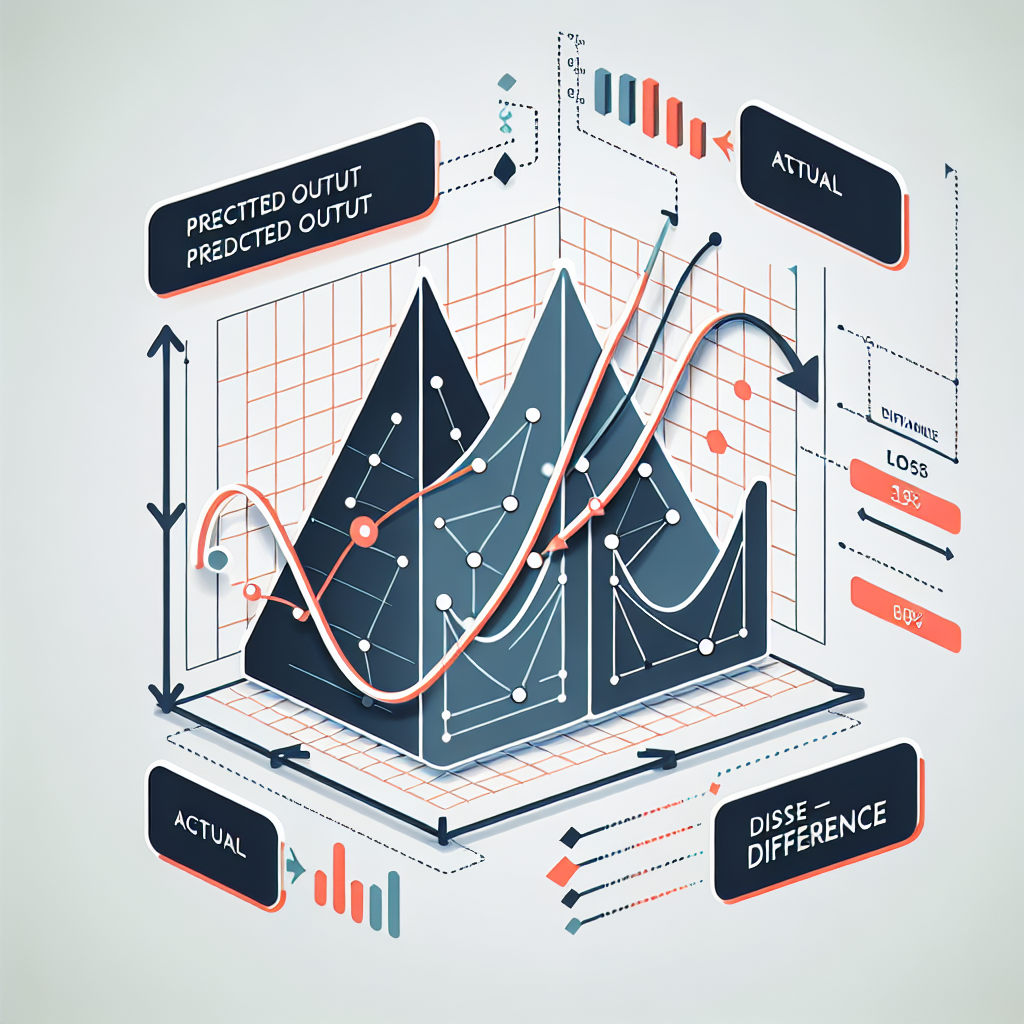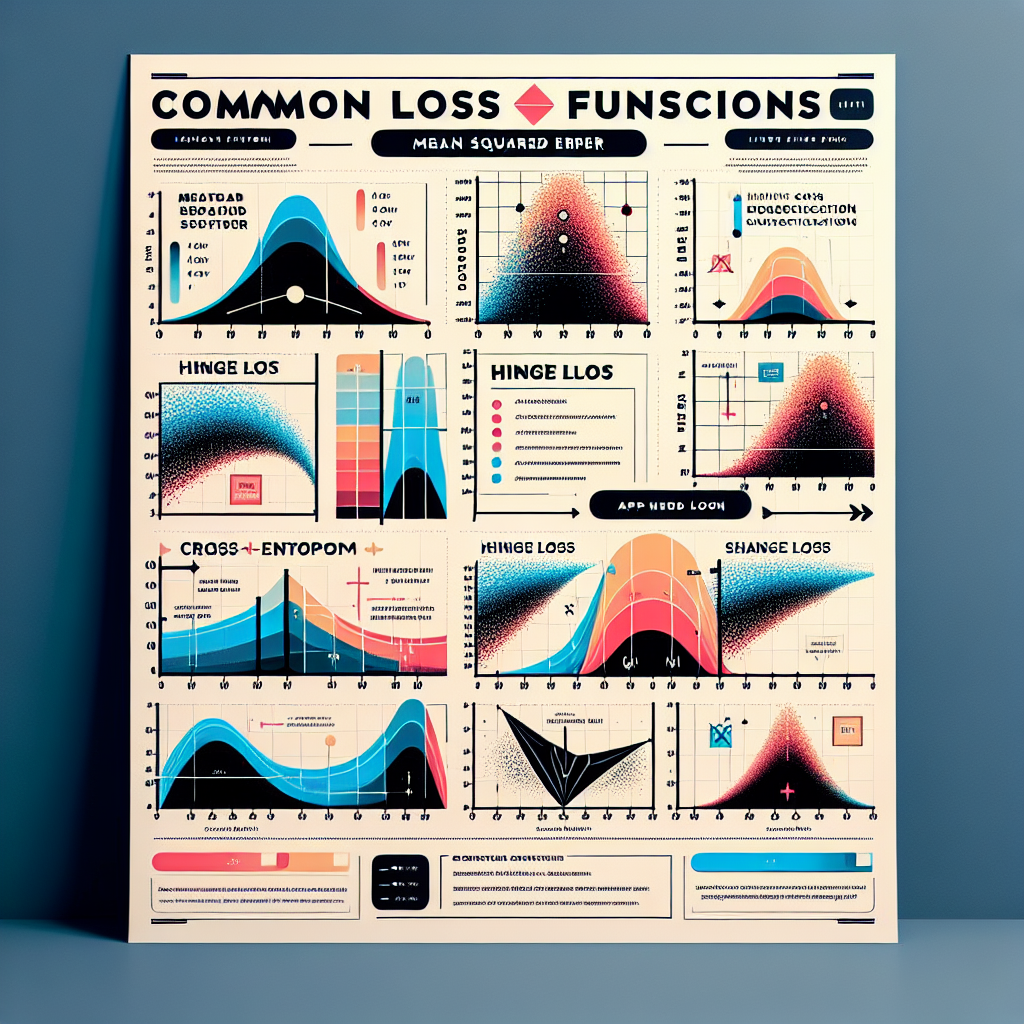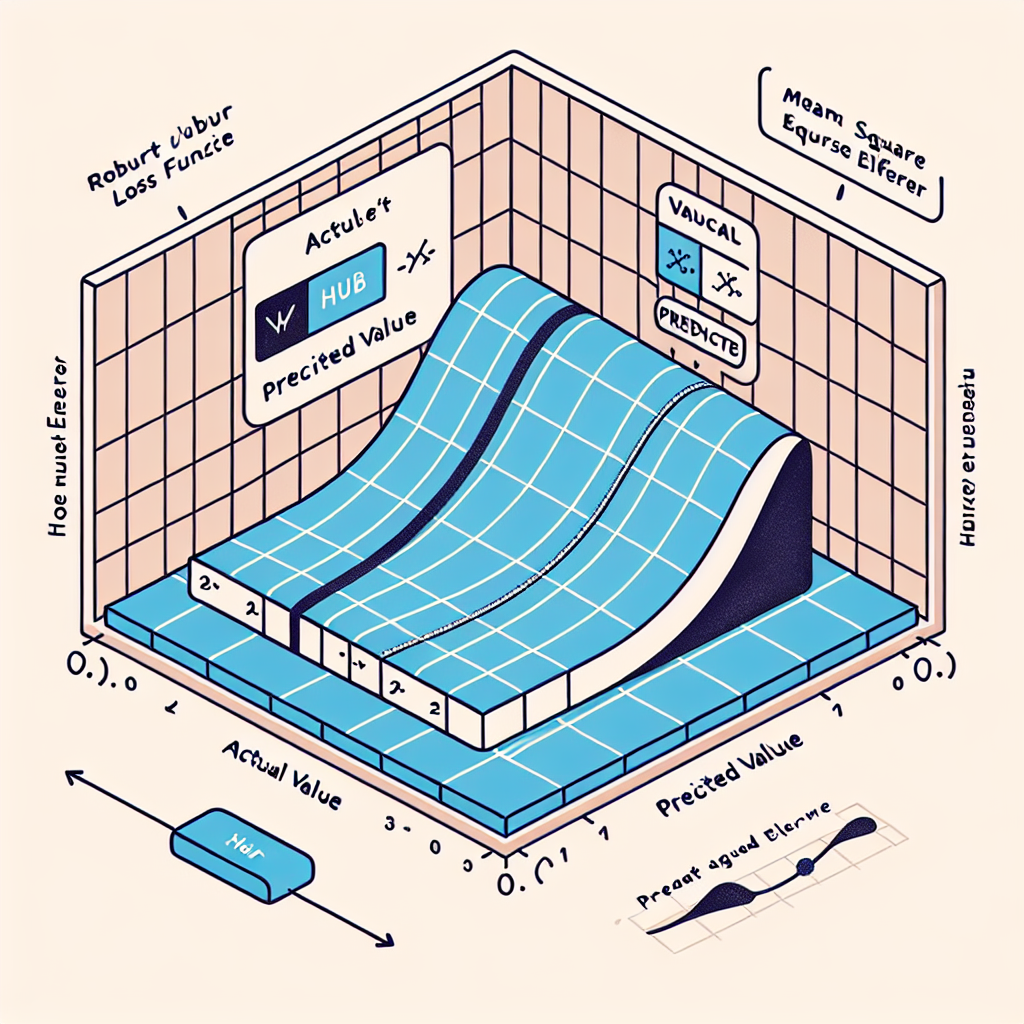In the realm of machine learning, the term 'loss function' is a familiar one. It's a critical concept that underpins the training of algorithms and the accuracy of their predictions.
Yet, the importance of loss functions often goes unnoticed. They are the unsung heroes guiding our models towards optimal performance.
In this article, we delve into the world of loss functions. We aim to shed light on their significance and how they shape the landscape of machine learning.
We'll explore the concept of loss functions in depth. We'll discuss how they measure the discrepancy between predicted and actual outputs, guiding our models towards accuracy.
We'll also touch upon the implementation of custom loss functions in TensorFlow. This powerful tool allows us to tailor our loss functions to specific use cases, enhancing model performance.
A special focus will be given to the Huber loss function. This robust alternative offers unique advantages over other loss functions, particularly in handling outliers.
Join us as we navigate the intricate world of loss functions. Understanding their importance is a crucial step towards mastering machine learning and deep learning.
The Concept of Loss Functions in Machine Learning
Loss functions are a cornerstone of machine learning. They are mathematical methods used to quantify how well a machine learning model is performing.
In essence, a loss function measures the difference between the model's predictions and the actual data. It provides a numerical value that represents the 'loss' or 'error' of the model's predictions.
Defining Loss Functions
A loss function, also known as a cost function, is a method to calculate the discrepancy between the predicted output of a model and the actual output. It's a measure of how far off our predictions are from reality.
The lower the value of the loss function, the better the performance of the model. Conversely, a high loss function value indicates poor model performance and a significant discrepancy between predictions and actual data.
The Role of Loss Functions in Model Training
Loss functions play a pivotal role in the training of machine learning models. They guide the optimization process, steering the model towards more accurate predictions.
During training, the goal is to minimize the loss function. This process involves adjusting the model's parameters to reduce the discrepancy between predicted and actual outputs.
In essence, loss functions provide a roadmap for model training. They indicate the direction in which the model's parameters should be adjusted to improve performance and reduce error.
Common Loss Functions and Their Applications
There are numerous loss functions used in machine learning, each with its unique characteristics and applications. The choice of loss function depends on the specific task at hand, whether it's regression, classification, or a more specialized problem.
Mean Squared Error (MSE)
Mean Absolute Error (MAE)
Cross-Entropy Loss
Hinge Loss
Huber Loss
Each of these loss functions has its strengths and weaknesses, and their effectiveness can vary depending on the specific characteristics of the data and the problem being solved.
Loss Functions for Regression
In regression tasks, where the goal is to predict a continuous output, Mean Squared Error (MSE) and Mean Absolute Error (MAE) are commonly used loss functions.
MSE squares the difference between the predicted and actual values, emphasizing larger errors. On the other hand, MAE takes the absolute value of the difference, giving equal weight to all errors.
Loss Functions for Classification
For classification tasks, where the goal is to predict discrete classes, Cross-Entropy Loss and Hinge Loss are often used.
Cross-Entropy Loss, also known as Log Loss, measures the performance of a classification model whose output is a probability between 0 and 1. Hinge Loss is typically used with Support Vector Machines (SVMs), a type of classification algorithm.
Specialized Loss Functions
In addition to these standard loss functions, there are also specialized loss functions designed for specific tasks or to address particular challenges.
For example, the Huber Loss function is a robust alternative that combines the strengths of MSE and MAE. It is less sensitive to outliers than MSE, making it useful in robust regression models. Other specialized loss functions include those designed for ranking tasks, multi-label classification, and more.
Gradient Descent and Loss Functions
Gradient descent is a crucial concept in machine learning, closely tied to the use of loss functions. It is an optimization algorithm used to minimize the loss function, guiding the learning algorithm towards the most accurate predictions.
Understanding Gradient Descent
At its core, gradient descent iteratively adjusts the model's parameters to find the minimum of the loss function. It does this by computing the gradient of the loss function with respect to the parameters and then updating the parameters in the direction of the negative gradient.
This process continues until the algorithm converges to a minimum, which represents the optimal parameters for the model.
The Importance of Loss Functions in Optimization
The choice of loss function is critical in this optimization process. The shape and characteristics of the loss function can significantly impact the efficiency and success of the gradient descent algorithm. A well-chosen loss function can guide the algorithm to converge quickly and accurately to the optimal solution.
TensorFlow and Custom Loss Functions
TensorFlow is a powerful open-source library for machine learning and deep learning. It provides a comprehensive ecosystem of tools, libraries, and resources that allows researchers and developers to build and deploy machine learning models.
One of the key features of TensorFlow is its flexibility. It allows users to implement custom loss functions, tailored to the specific needs of their machine learning tasks. This flexibility can lead to significant improvements in model performance.
Custom loss functions in TensorFlow can be implemented using the Keras API, which provides a user-friendly interface for defining and training models.
Implementing Custom Loss Functions in TensorFlow
Creating a custom loss function in TensorFlow involves defining a function that takes two arguments: the true labels and the predicted labels. This function should compute and return the loss value, which TensorFlow will then use to optimize the model.
The custom loss function can be passed to the model's compile method, just like any built-in loss function. This allows the model to use the custom loss function during training.
Case Studies: TensorFlow Custom Loss Functions
There are numerous examples of successful applications of custom loss functions in TensorFlow. For instance, in a task of image segmentation, a custom loss function was used to give more weight to certain classes, improving the model's performance.
In another case, a custom loss function was used in a regression problem to penalize underestimations more than overestimations. This was crucial for the specific business context, where underestimations had a higher cost.
Huber Loss Function: A Robust Alternative
In the realm of loss functions, the Huber loss function stands out as a robust alternative. It is especially useful in scenarios where the data contains outliers that can adversely affect the learning process.
The Huber loss function combines the best properties of two commonly used loss functions: the Mean Squared Error (MSE) and the Mean Absolute Error (MAE). It behaves like the MSE when the error is small and like the MAE when the error is large, providing a balance between the sensitivity to outliers and the efficiency of learning.
Exploring the Huber Loss Function
The Huber loss function is defined by a single parameter, delta, which determines the point at which the function transitions from quadratic to linear. This parameter can be tuned to adjust the sensitivity of the function to outliers.
The Huber loss function is differentiable at all points, which makes it suitable for optimization algorithms that rely on gradient information, such as gradient descent.
Advantages of Huber Loss Over Other Functions
The main advantage of the Huber loss function is its robustness to outliers. Unlike the MSE, which can be heavily influenced by a few outliers, the Huber loss function is less sensitive to extreme values.
Another advantage is its efficiency. The Huber loss function is more computationally efficient than the MAE, especially for large datasets, due to its differentiability. This makes it a preferred choice for many machine learning tasks.
The Impact of Loss Functions on Model Performance
The choice of loss function can significantly impact the performance of a machine learning model. It not only influences the speed at which the model learns but also its ability to generalize from the training data to unseen data.
The loss function also plays a crucial role in managing the trade-off between bias and variance, two fundamental sources of error in machine learning models. This trade-off is a key consideration in model optimization.
Bias-Variance Trade-off and Loss Functions
Bias refers to the error introduced by approximating a real-world problem, which is often complex, by a much simpler model. On the other hand, variance refers to the error introduced by the model's sensitivity to fluctuations in the training set.
The choice of loss function can influence this trade-off. Some loss functions may lead to models with high bias but low variance, while others may result in models with low bias but high variance.
Loss Functions and Model Generalization
The ability of a model to generalize is directly related to the loss function used during training. A well-chosen loss function can help the model to learn the underlying patterns in the data without overfitting to the noise or outliers.
Conversely, an inappropriate loss function can lead to models that overfit the training data, performing well on the training set but poorly on unseen data. Therefore, understanding and choosing the right loss function is crucial for building robust and reliable machine learning models.
The Evolving Landscape of Loss Functions
The field of machine learning is continually evolving, and with it, the landscape of loss functions. As we strive to build more accurate and robust models, the importance of loss functions cannot be overstated. They are the guiding light for our algorithms, helping them navigate the complex terrain of high-dimensional data.
In the future, we can expect to see more research and innovation in this area, with new loss functions being developed to tackle emerging challenges. As machine learning practitioners, it is our responsibility to stay abreast of these developments and understand how to apply them effectively in our work.













.jpg)




0 Comments